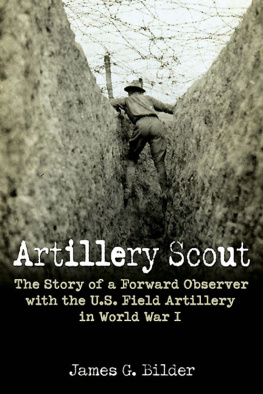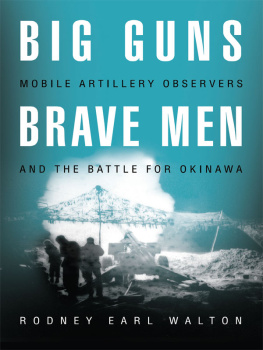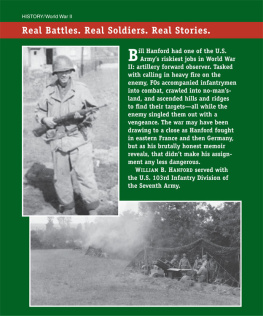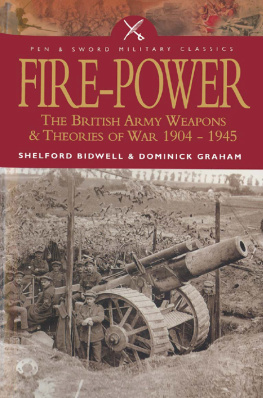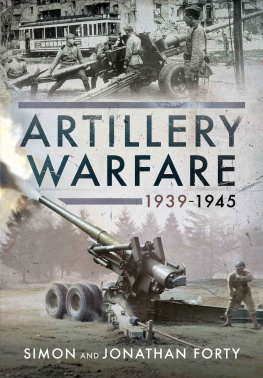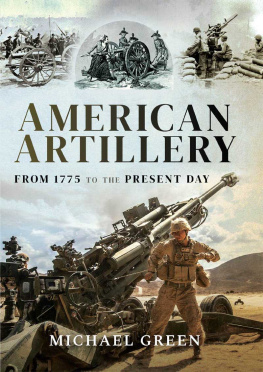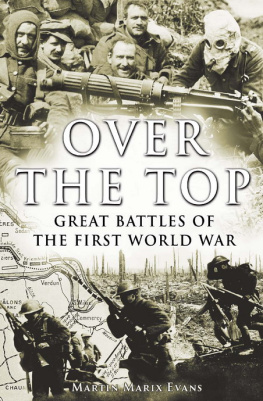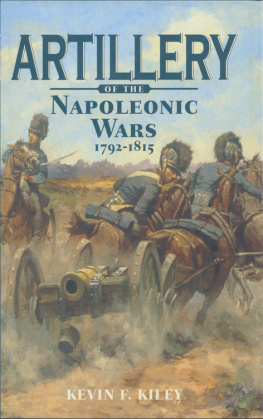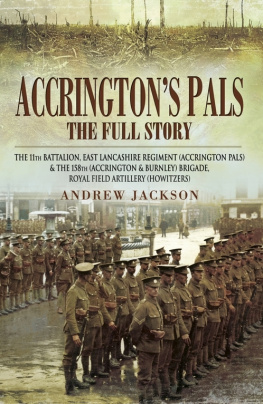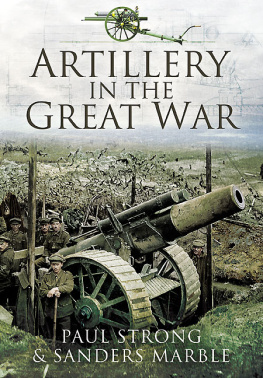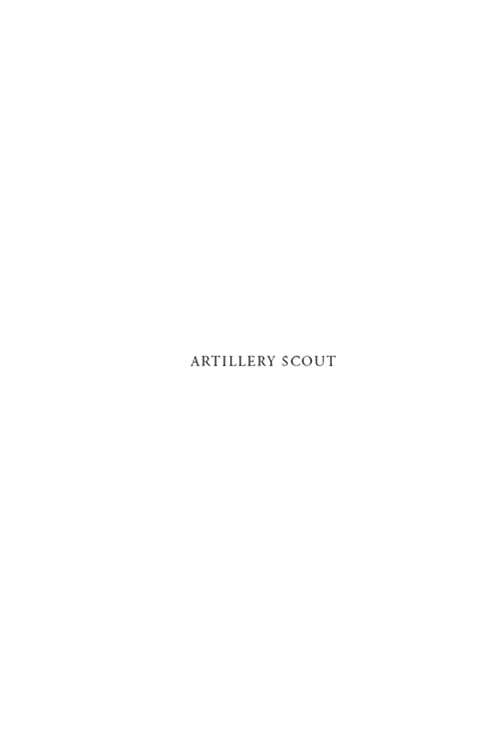
Published in the United States of America and Great Britain in 2014 by
CASEMATE PUBLISHERS
908 Darby Road, Havertown, PA 19083
and
10 Hythe Bridge Street, Oxford, OXI 2EW
Copyright 2014 James G. Bilder
ISBN 978-1-61200-271-2
Digital Edition: ISBN 978-1-61200-272-9
Cataloging-in-publication data is available from the Library of Congress and the British Library.
All rights reserved. No part of this book may be reproduced or transmitted in any form or by any means, electronic or mechanical including photocopying, recording or by any information storage and retrieval system, without permission from the Publisher in writing.
10 9 8 7 6 5 4 3 2 1
Printed and bound in the United States of America.
For a complete list of Casemate titles please contact:
CASEMATE PUBLISHERS (US)
Telephone (610) 853-9131, Fax (610) 853-9146
E-mail:
CASEMATE PUBLISHERS (UK)
Telephone (01865) 241249, Fax (01865) 794449
E-mail:
____________________
Photo on title page:
An American gun crew operating a French 75 mm in combat. The American Army had very few of its own artillery pieces in France and requisitioned roughly 4,000 artillery pieces from the French. The fact that the gun is being fired on open ground as opposed to being in a casemate is a testament to the rapid mobility of the American and Allied forces in the autumn of 1918.Courtesy of First Division Museum
Contents
To the memory of my Grandfather, Leonard F. Fairfield, and all those who were a part of Americas Lost Generation. Also, to my son, James M. Bilder, and his comrades in arms who continue the proud tradition of Illinois 33 rd Infantry Brigade.
CADENCE OF THE U.S. ARMY FIELD ARTILLERY
Over hill, over dale, we have hit the dusty trail,
and those caissons go rolling along.
Counter march! Right about!
hear those wagon soldiers shout,
while those caissons go rolling along.
For its Hi! Hi! Hee! in the Field Artillery,
Call off your numbers loud and strong.
And where eer we go you will always know
that those caissons go rolling along.
To the front, day and night where the doughboys dig and fight
and those caissons go rolling along.
Our barrage will be fired on the rockets flare
while those caissons go rolling along.
For its Hi! Hi! Hee! in the Field Artillery,
Call off your numbers loud and strong.
And where eer we go you will always
know that those caissons go rolling along.
With the cavlry, boot to boot we will join in the pursuit
and those caissons go rolling along.
Action front, at a trot, volley fire with shell and shot
while those caissons go rolling along.
For its Hi! Hi! Hee! in the Field Artillery,
Call off your numbers loud and strong.
And where eer we go you will always know
that those caissons go rolling along.
Should the foe penetrate, evry gunner lies in wait
and those caissons go rolling along.
Fire at will, lay em low, never stop for any foe
while those caissons go rolling along.
For its Hi! Hi! Hee! in the Field Artillery,
call off your numbers loud and strong.
And where eer we go you will always know
that those caissons go rolling along.
But if fate me should call, and in action I should fall
keep those caissons go rolling along.
Then in peace Ill abide when I take my final ride
on a caisson thats rolling along.
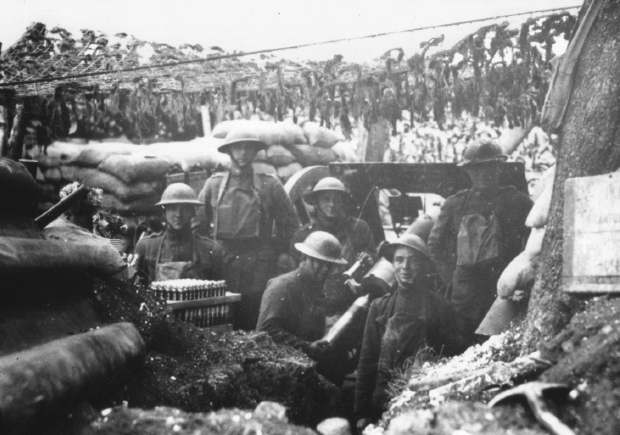
American artillery crew in a casemate crowded around their French 75mm field gun for a picture. The French 75 (Soixante-Quinze) was the standard artillery piece used by the AEF. It had a crew of six men who were cross trained but could still function effectively with as few as three. The secrets of the 75s effectiveness were so closely guarded by the French that even their American allies did not know everything about the gun.courtesy of First Division Museum
Foreword
T O MOST AMERICANS, World War IAKA the Great War is not even a dim memory; it has passed into ancient history. Some schools and textbooks dont even mention it.
And yet, this massive conflict that cost almost nine million human lives and was, until the next global conflict that followed less than a generation later, the greatest man-made disaster the world had ever seen. Because it was so terrible, it is no wonder that so many people believed that it was the war to end all wars. After all, who could possibly engage in another war if the final butchers bill was so ghastly?
Although the United States did not officially enter the war until April 1917 when Congress declared war on Germany and the Central Powers, and its first troops did not reach French soil until June 1917, America still lost 116,000 troops in just seventeen monthsdouble what the U.S lost during the entire ten years of the Vietnam War. Many of the other warring nations lost far, far more.
As the eminent British historian Sir Martin Gilbert noted, World War I changed our world. In its wake, empires toppled, monarchies fell, whole political systems realigned. Instabilities became institutionalized, enmities enshrined. Revolution swept to power ideologies of the left and right. And the social order shifted seismically. Manners, mores, codes of behavior; literature and the arts; education and class distinctions: all underwent a vast sea change.
One of the problems with writing about such a massive, history-altering event as World War I is that it is too big, too massive, to wrap our heads around. The statistics numb and overwhelm us and dredge up feelings of disbelief. Who can truly grasp the idea of nine million deaths? Or, for that matter, the fifty million in the war that followed?
By concentrating primarily on one individualhis grandfather, Leonard (Len) FairfieldJames Bilder helps us comprehend the personal impact of this event. He focuses tightly on the few, rather than using a wide-angle lens to view the many. Len Fairfield, whom the reader will soon discover, served as a young Yank artilleryman from Chicago in the Illinois National Guards 58th Field Artillery Brigade that supported the 1st and 89th Divisions. (Bilder also doesnt neglect his grandmother, Maggie, who kept the home fires burning.)
Until now, most accounts of WWI have concentrated on the trench-bound mud rats of the infantry, and the fledgling aerial corps with their gallant knights of the air doing battle in their flimsy aeroplanes. Bilders book is the first in recent memory to be devoted almost entirely to the life of a footman serving the King of Battlethe artillery. And, if nothing else, World War I is remembered for its prolific use of artillery.
From small, ordinary field guns (such as the famous French 75) to guns so huge they had to be mounted and transported on several railroad cars, artillery dominated the battlefield, churning the farm fields, over which the war was fought, into bottomless bogs, and blasting soldiers into tiny, bloody scraps of meat. Many of those who survived the barrages were never the same mentally, coming down with a condition called shell shock, later re-termed post-traumatic stress disorder, or PTSD.

